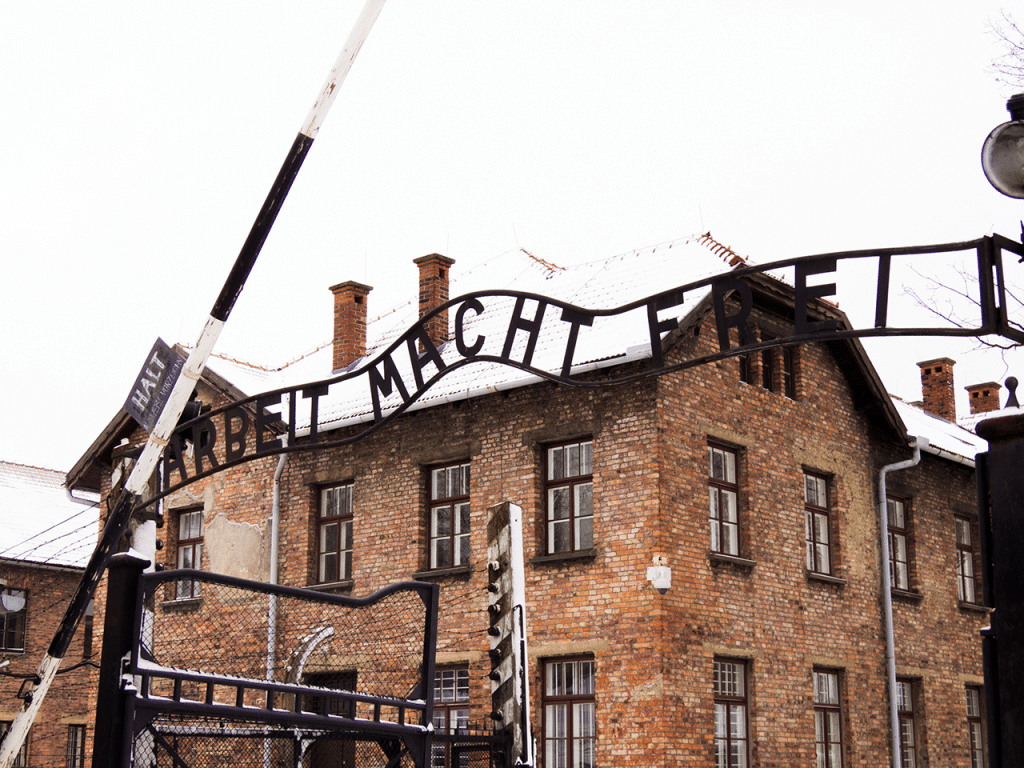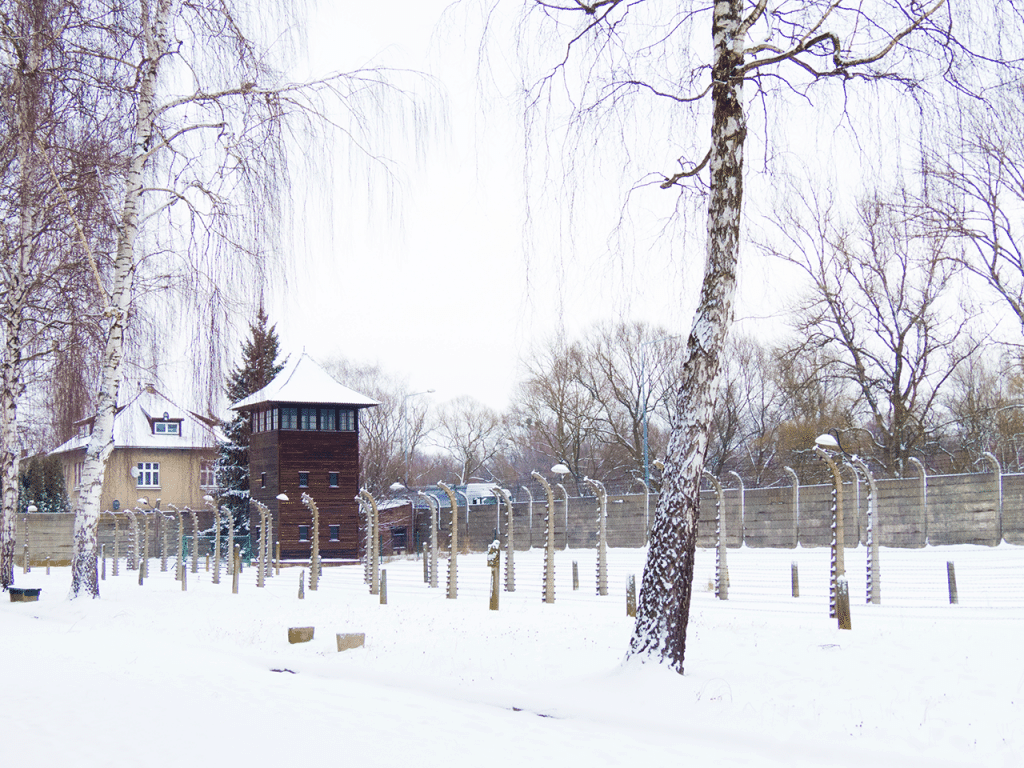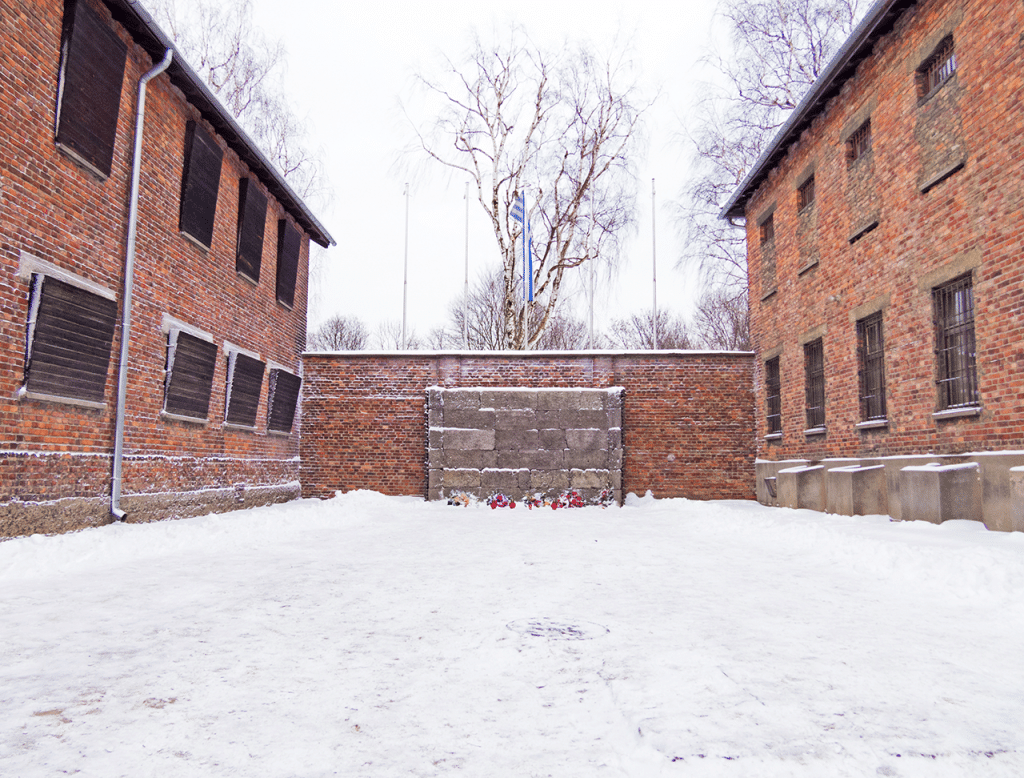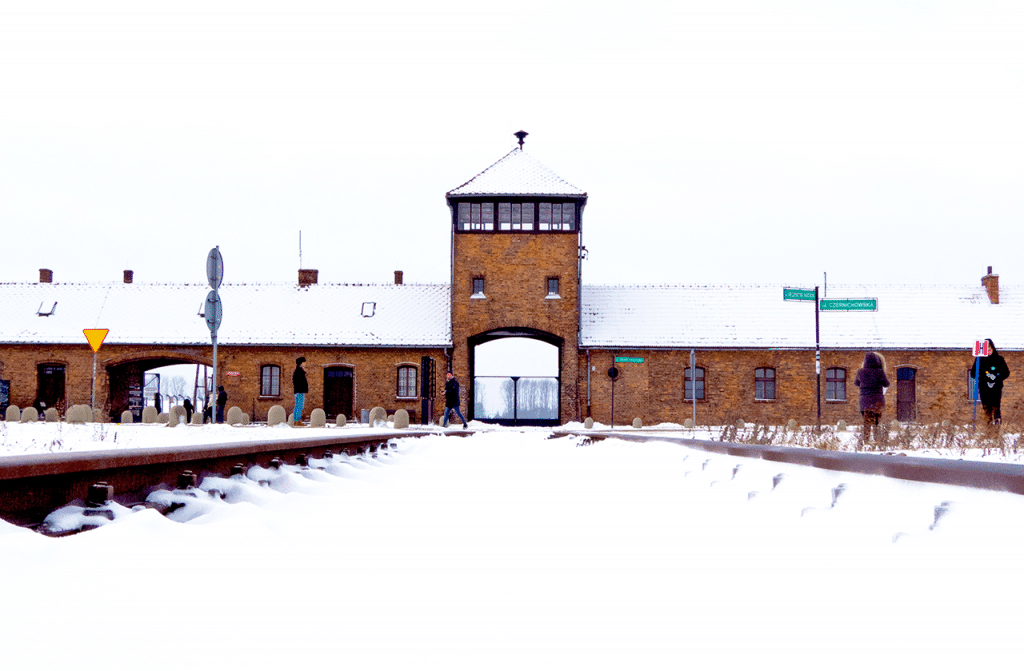Viaggio ad Auschwitz: perché ricordare è importante
In qualità di Affiliato Amazon io ricevo un guadagno dagli acquisti idonei. Leggi l’informativa.
“In fila per le verdure o qualcosa del genere, dissi alla mia vicina di casa che era accanto a me che avrebbero iniziato a uccidere gli ebrei nei campi di concentramento e poi ne avrebbero fatto delle saponette. E mi rispose Frau Bonhoeffer, “Se non la smetti di raccontare queste storie tremende, finirai anche tu in un campo di concentramento e nessuno di noi potrà aiutarti. Quello che dici non è vero, non dovresti credere a certe cose. Le senti ai notiziari stranieri e quelli le dicono soltanto per crearci dei nemici.”
Casalinga di Berlino e socialdemocratica
Let’s start by saying that what really got to me was the silence. We visited the Auschwitz-Birkenau memorial in January and it was snowing. We were freezing, thinking there wasn’t going to be anyone around and still there were lots of groups visiting just like us. In the camp you will probably hear the guides explaining the horrors in several languages, or the sounds of those crying for what they are seeing. Aside from that, there’s a surreal silence. Visitors just don’t know what to say to describe what they are feeling.
The visitors are allowed only tiny backpacks inside (max. 30x20x10 cm). In case you have a bigger one, you will be asked to use the available lockers. Before to be able to walk into the Memorial you will have to clear security controls much similar to those you see in any airport. The guards are absolutely patient: my husband forgot some painkillers for his headache in his pocket and thus the metal detector kept on dinging. It took him and the guards a while to understand what was going on and still they were never rude to us, patiently waiting for him to pick up all of his belongings before to let us walk away. So don’t forget anything into your pockets because the metal detectors are particularly sensitive!
The duration of a visit is determined by your interests and needs. It took us about 2/3 hours to visit the Auschwitz memorial before to go to Birkenau (a much shorter visit, even because it had started heavily snowing and we were freezing). If you are planning a trip, make sure you dedicate a good half day (if not more) to the memorial site. In case you’re booking for more than 10 people, know that you will have to hire a headphone guiding system, according to the rules.
As I mentioned earlier, we visited the Auschwitz-Birkenau Memorial in Winter and sometimes it was difficult to walk around without slipping, because of the snow and ice. That’s why I think that it might be difficult for disabled persons to move around the grounds and buildings, especially because the buildings don’t have wheelchair ramps.
According to the rules, it is not recommented that children under 14 visit the Memorial, so if you are travelling with your kids, you might have to skip the visit: it is hard for adults, but it can be shattering for kids.
“Auschwitz I” (as opposed to “Auschwitz II – Birkenau“) was the main camp where Nazis started to bring men and, later on, also women. Here they carried out the first experiments using the Zyklon B in gas chambers to murder large numbers of people. Here they conducted the first experiments on prisoners and carried out most of the first executions by shooting or hanging.
As I said, the silence will accompany you throughout your visit. In this Memorial we walked through the blocks, square brick buildings preserved for the future generations. In each block we found hundreds of photos hanging to the walls. It isn’t uncommon to find people searching for relatives, checking out the numbers on the photos and those they had scribbled down at home.
Back in 1955 the buildings became the perfect place to host documentary photographs, photocopies of documents, sculptures, garments, bunks and other furnishings from prisoner rooms, as well as items seized from the Jewish deportees. The permanent exibition is located in blocks 4, 5, 6, 7 and 11. I can’t speak for my husband, but I never knew many of the things I learned thanks to this Memorial.
Sure, I might’ve been impressed by the huge room full of women’s hair, on which studies have found particles of the Zyklon B, or the amount of brushes, combs and razors once belonging to the prisoners. But there are a few things that I will never forget.
First of all, the sad display of suitcases, with names, numbers and addresses clearly scribbled in white. The people who were sent to Auschwitz had no idea they weren’t going back home. First they were moved out of the cities because the Nazis and German citizens didn’t want to see Jews on the streets (it was common belief that they were spreading diseases), then even the ghettos became too close to the cities, so they told them that they had to move to work camps. Seeing all these suitcases was heart-wrenching.
Another blow was seeing the photos (and reading all the horrorific stories about it) of the kids and women used as test subjects by Joseph Mengele. He was a notorious member of the team of doctors responsible for the selection of victims to be murdered in the gas chambers and for performing horrorific human experiments on prisoners. He was obsessed by his genetic studies, so he was particularly interested in twins, people with physical abnormalities and women that he tried to mass sterilize in several ways. Block 10 was originally the “women camp“, and yet soon became an horror building. Between block 10 and block 11, where prisoners were hauled before the Gestapo Police Court, often punished by letting them starve to death in cells where they could only stand (you will get to see them inside), there’s the so called “Black Wall“. Prisoners who were lucky enough to be sentenced to immediate death by shooting were brought in this solitary courtyard in front of a wall cover that was put there so the bullets wouldn’t damage the brick wall behind. Today’s Black Wall is a reconstruction. In this courtyard millions of people have trod, including most of the world leaders of the Twentieth Century: the silence is deafening in front of the little bouquets of flowers scattered in the snow.
We walked with the others in silence, each one of us trying to cope with what we were seeing. Even on the bus ride nobody uttered a single word.
First of all, as I mentioned before, you will learn so many things that you won’t find anywhere else. The visit to Auschwitz-Birkenau makes things personal: you get to see and experience with your eyes what happened and this will make it impossible to ignore the horrors of only about 70 years ago. Through the rubble, the piles of shoes, hair brushes and luggage, there were proofs of human dignity, honor, love and hope. Prisoners were often trying to help each other, even knowing what they would endure in case they were discovered. It sinks block after block, reading all the documents, seeing the pictures and watching the educational videos. The Nazis had taken everything, but they couldn’t take their dignity.
It is easy to think that this could never happen again and just brush it off. Why should we spend a depressing day in a concentration camp when we could be shopping and eating fancy food at the Galeria Krakowska? Because living history is important. The scars of the conflict are there: the least we can do to honor all those who have died there is spreading the word, learning their story and make sure that these horrors are never repeated them. A visit to Auschwitz will make you really understand what religious intolerance, persecution of minorities, bigotry, hatred, abuse and discrimination can lead to.
With everything that is going on in the world nowadays, I strongly believe that we need a reminder.
Read my guide on Krakow and a review of Hotel Kazimierz III in the Jewish district!
Pin it for later!
Travelling Dany – Danila Caputo
Danila Caputo è una scrittrice di viaggi bilingue che vive tra Napoli e la Costiera Amalfitana, laureata in Lingue e Culture Moderne all’Università Suor Orsola Benincasa (Napoli). Vive e lavora con suo marito Aldo, fotografo e creator di video. Questo blog racconta le loro avventure nel mondo e offre tanti consigli sui viaggi sostenibili e su come essere viaggiatori responsabili. Trovate tutte le ultime novità sugli ultimi viaggi su Youtube, Instagram e Facebook.








